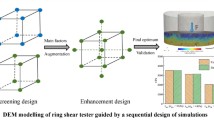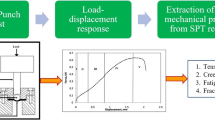Abstract
Over the last fifteen years an extensive programme of work on quantifying and predicting creep behaviour of particleboard has been undertaken. This paper first sets out some of the philosophy underlying the selection of test methodology used, and then proceeds to summarise and highlight the principal results obtained under both steady- and unsteady-state environments. Very strong interactions were found in the analysis of variable influencing creep behaviour. The reasons for adopting rheological models as predictive tools are discussed and the merits of a 5-parameter model are illustrated. A 4-parameter model is used to obtain the relative proportions of the three components of creep deflection under different conditions: this procedure clearly demonstrates the significant role of the viscous component in determining creep deflection at high levels of stress and relative humidity.
Zusammenfassung
Während der letzten 15 Jahre ist ein umfangreiches Programm zur Quantifizierung und Vorhersage des Kriechverhaltens von Spanplatten durchgeführt worden. In diesem Beitrag werden zunächst grundsätzliche Überlegungen zur Auswahl der Testmethoden vorgestellt. Danach wird summarisch über die hauptsächlichen Ergebnisse der Untersuchungen unter konstanten und wechselnden Umgebungsbedingungen berichtet. Es wurden starke Wechselwirkungen der einzelnen Variabeln gefunden, welche das Kriechen beeinflussen. Die Gründe, warum rheologische Modelle zur Vorhersage herangezogen wurden, werden diskutiert und die Vorzüge eines 5-Parameter-Modells dargestellt. Ein 4-Parameter-Modell wird verwendet, um die relativen Anteile der drei Komponenten der Kriechverformung unter verschiedenen Bedingungen herauszufinden. Dieses Vorgehen zeigt deutlich die Bedeutung des visco-elastischen Anteils beim Bestimmen der Kriechverformung unter hohen Belastungen und hoher relativer Feuchte.
Similar content being viewed by others
Literature
Dinwoodie, J.M.; Paxton, B.H.; Pierce, C.B. 1981: Creep in chipboard. Part 3. Initial assessment of the influence of moisture content and level of stressing on rate of creep and time to failure. Wood Sci. Technol 15:125–144
Dinwoodie, J.M.; Pierce, C.B.; Paxton, B.H. 1984: Creep in chipboard. Part 4. The influence of temperature and moisture content on the creep behaviour of a range of boards at a single stress level. Wood Sci Technol 18:205–224
Dinwoodie, J.M.; Paxton, B.H.; Pierce, C.B.; Aloysius, E.J. 1985: Quantification and prediction, of creep in particleboard and other wood-based sheet material. Proc Symp Forest Products Research International, Pretoria
Dinwoodie, J.M.; Higgins, Jo-Anne; Robson, D.J.; Paxton, B.H. 1990: Creep in chipboard. Part 7. Testing the efficacy of models on 7–10 years data and evaluating optimum period of prediction. To be published in Wood Sci Technol
Dinwoodie, J. M.; Robson, D. J.; Paxton, B.H.; Higgins, Jo-Anne 1991: Creep in chipboard. Part 8. The effect of steady state moisture content, temperature and level of stressing on the relative creep behaviour and creep modulus of a range of boards. Submitted for publication in Wood Sci Technol
Gressel, P. 1984: Zur Vorhersage des langfristigen Formänderungsverhaltens aus Kurz-Kriechversuchen Holz Roh Werkstoff 42:293–301
Pierce, C.B.; Dinwoodie, J.M. 1977: Creep in chipboard. Part 1. Fitting 3- and 4-element response curves to creep data. J Mat Sci 12:1955–1960
Pierce, C.B.; Dinwoodie, J.M.; Paxton, B.H. 1979: Creep in chipboard. Part 2. The use of fitted response curves for comparative and predictive purposes. Wood Sci Technol 13:265–282
Pierce, C.B.; Dinwoodie, J.M.; Paxton, B.H. 1985: Creep in chipboard. Part 5. An improved model for prediction of creep deflection. Wood Sci Technol 19:83–91
Pierce, C.B.; Dinwoodie, J.M.; Paxton, B.H. 1986: Creep in chipboard. Part 6. Time to failure analysis under steady state conditions. Wood Sci Technol 20:281–292
Author information
Authors and Affiliations
Additional information
Dedicated to Prof. Dr. Horst Schulz on the occasion of his 65th birthday.
Rights and permissions
About this article
Cite this article
Dinwoodie, J.M., Higgins, J.A., Paxton, B.H. et al. Creep research on particleboard. Holz als Roh-und Werkstoff 48, 5–10 (1990). https://doi.org/10.1007/BF02607843
Issue Date:
DOI: https://doi.org/10.1007/BF02607843




